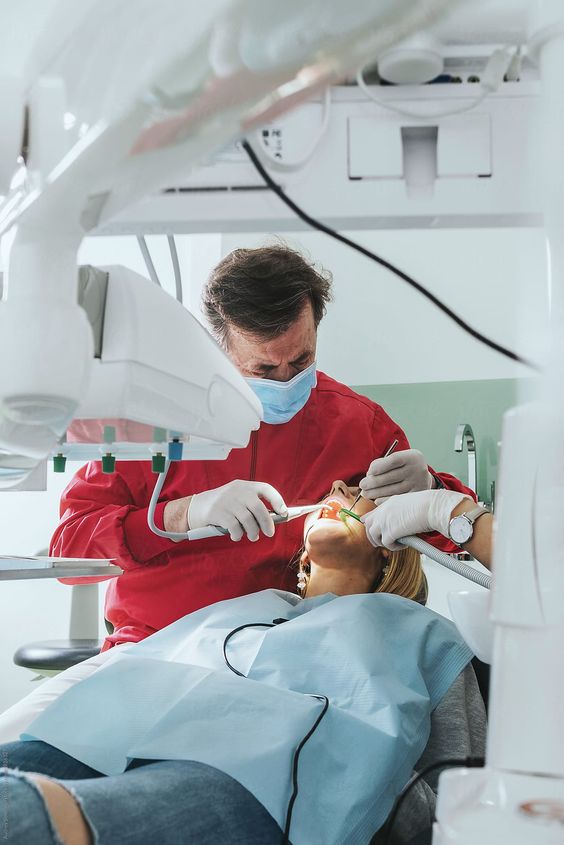AndraUrsuta.com – A Tooth Extraction Procedure is a dental procedure in which a tooth is extracted. Teeth are extracted for a variety of reasons. These include impacted teeth, which may be partially or fully trapped under the gums. These impacted teeth are most often the third set of molars, also known as wisdom teeth. Some patients may require this procedure if the teeth are impacted and causing other problems. Fortunately, many dentists are capable of performing a Tooth Extraction Procedure.
The dentist will give you instructions for the aftercare

After the tooth is extracted, it may be necessary to apply gauze to the extraction site to promote clotting. This will prevent the socket from drying out and promote healing. The gauze is removed after the extraction procedure, but some light bleeding may remain for up to 24 hours. During this period, you should avoid vigorous mouth movements and spitting. The dentist will provide you with aftercare instructions to keep the area clean and free of infection. You can also apply warm salt water to the extraction site to promote faster healing. The warm salt water will help soothe the socket and is antibacterial.
An extraction is a common dental procedure, and the process is generally painless. In order to perform it, a dentist must first enlarge the tooth socket and separate the tooth from its root ligament. Once the socket is sufficiently wide and the root ligament has been torn away, the dentist can remove the tooth. The entire procedure takes about half an hour, so you should expect a little discomfort. The procedure will leave you feeling better.
Your dentist will take a complete medical history before starting the procedure

A Tooth Extraction Procedure is performed by a dentist or orthodontist. Your dentist will take a thorough medical history before beginning the procedure. Besides a list of dental conditions, your dentist will ask you to mention your medications. Tell your dentist if you are taking any blood thinners or antibiotics. He or she will also use an x-ray to determine how to extract your tooth. In addition to removing the tooth, the dentist will place a temporary bridge so that the area surrounding it will heal.
During the procedure, the dentist will numb the area around the tooth with a local anesthetic. You will also be put under a general anesthetic so that you will not feel any pain during the procedure. However, some dentists will not offer these options and will refer you to an oral surgeon. The dentist will then take an x-ray of your mouth to determine if you have curvature of the root.
Fasting ahead of time will prevent nausea during and after the procedure

You should dress comfortably for your tooth extraction. It is best to wear loose-fitting clothing, as you may be required to drink some liquids or take a pill. You may also need to avoid eating or drinking for six to eight hours before the procedure. While it is not necessary to fast prior to the extraction, a fast beforehand will prevent nausea during and after the procedure. In addition, if you have diabetes, it is important to notify your dental provider about any restrictions.
After the extraction, you should keep your head elevated. Avoid lying flat or forcibly spitting. If you experience swelling or drainage around the extraction site, you should consult your dentist immediately. Some patients are unable to drive home after the procedure. For these people, a ride home will be helpful. You can also call your dentist if you have a fever of more than 100.4 Fahrenheit, or if you notice any drainage around the extraction site.
It is normal to have pain after tooth extraction

Following your tooth extraction, your dentist may recommend antibiotics to prevent infection. You may be prescribed antibiotics, depending on the type of suture. It is normal to experience some pain after your tooth extraction, but you should avoid hot liquids and certain types of food for a day or two. However, if your tooth extraction was complicated, you will most likely need to see your dentist again in one to two weeks to have the stitches removed.
A Tooth Extraction Procedure involves the complete removal of a problematic tooth. Many times, extra teeth can cause overcrowding, resulting in sore gums, and difficulty eating. Wisdom teeth may also need to be removed if they cause pain, are infected, or have cysts. This procedure is often necessary to treat tooth pain and keep the rest of the mouth healthy. However, it is best to discuss the treatment with your oral surgeon before scheduling an extraction.
